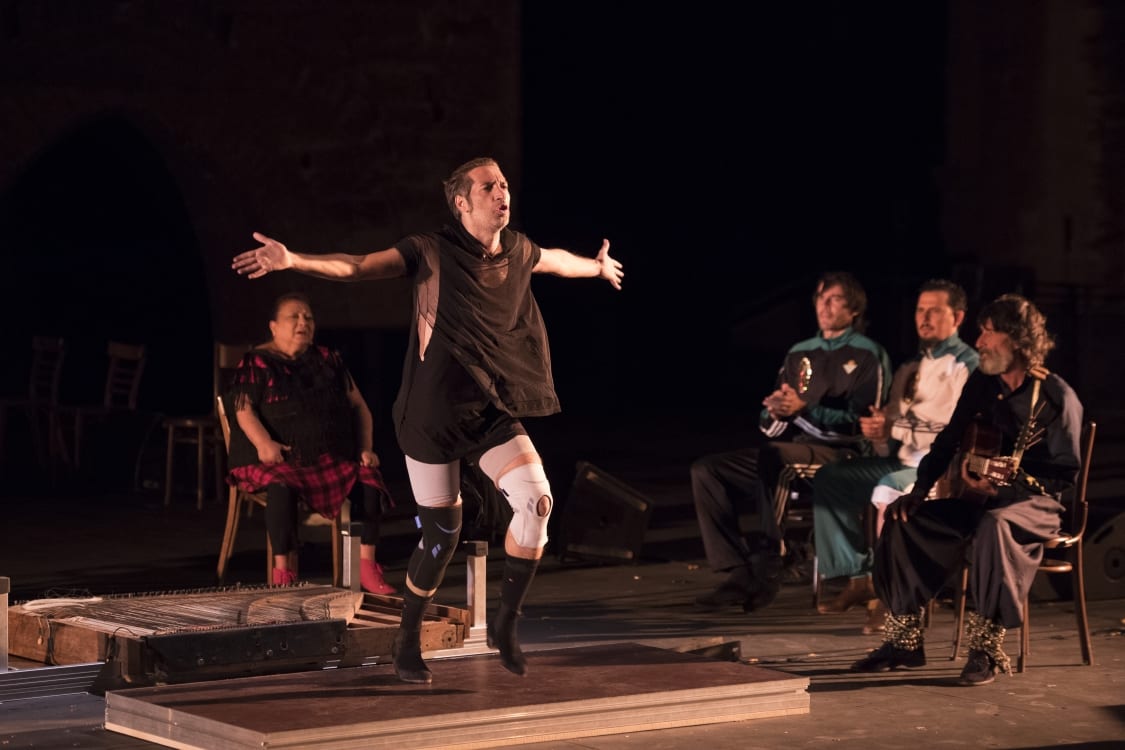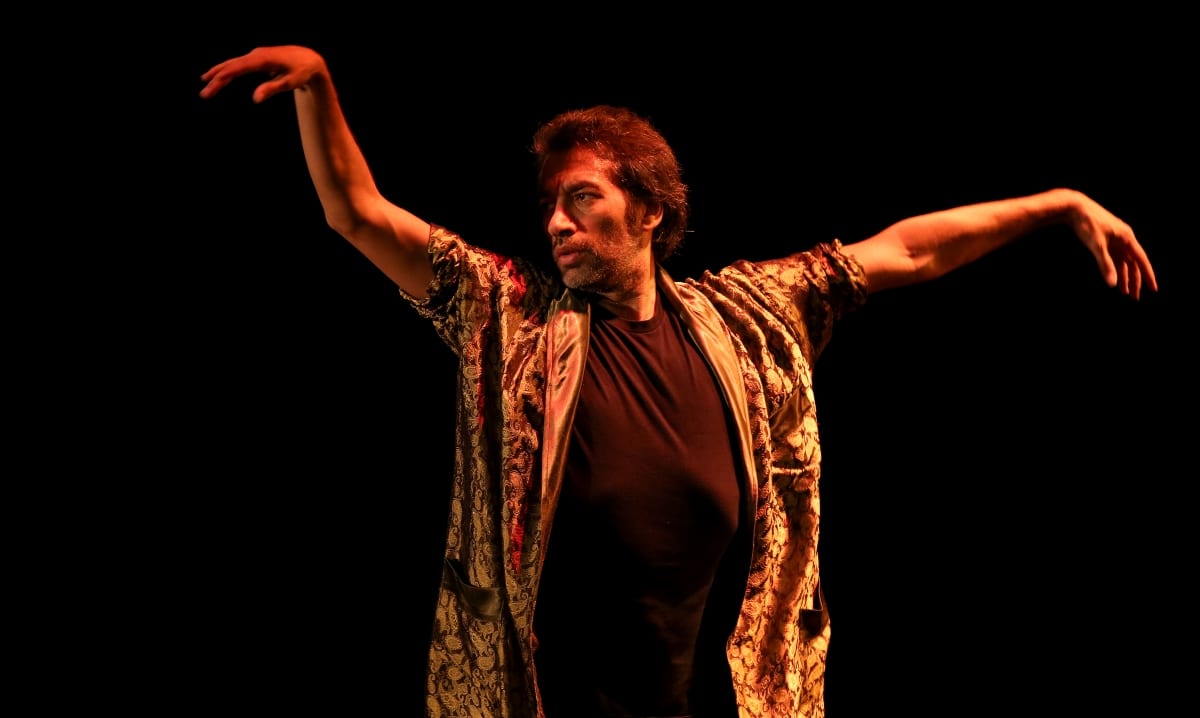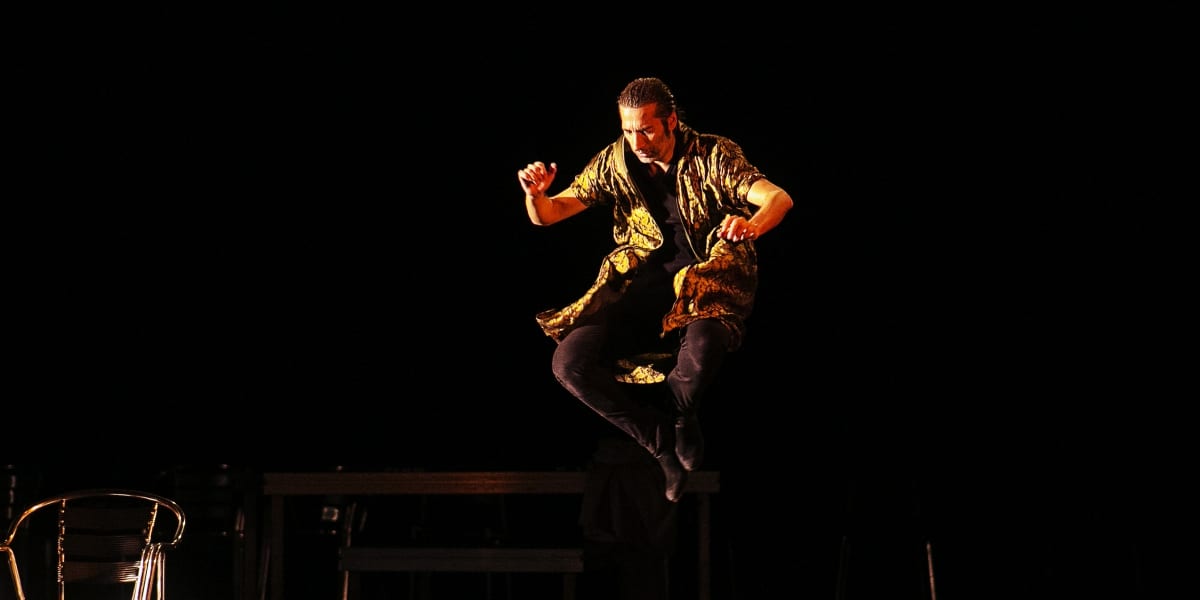In the best of flamenco you are drawn deeper and deeper into the emotional meaning of the piece through the stylised intensity of the dancing and the cumulative layering of the rhythms until you find your own emotional reflection in what is being performed. Unfortunately, this was only incidentally true in La Fiesta, which is frustrating given the evident flair and talent of the hugely energetic cast.
Fiesta takes its point of departure from the informal improvisations flamenco artists put on late into the night after their formal performances are over. Galván has drawn on his experiences of growing up in a flamenco family tradition here and the themes that appear to run through the evening are those that you would expect in a private party where everyone is letting off steam with no boundaries. Dissipation, excess, random violence, extravagant melancholy and obsessive patterns of repetition all are in evidence, and often memorably so. But what is less apparent is any sense of self-awareness. Just as in a real-life private party people lose a sense of how their actions appear to others, here it seems as though the performers too are often just talking to themselves rather than shaping a performance, even indirectly, to the needs of an audience.
As a result the evening did not amount to more than the sum of its parts despite the presence of several supreme talents in their artistic fields. A good half hour could have been shorn off the running-time to advantage. There was too much artful fooling around, whatever deep concept may have been in the mind of the creatives, and simply not enough dance.
That said the evening offered a wonderful start and finish simply because those were the most through-danced and fully realised sequences. A series of flat surfaces, some on springs, and at different heights, occupied centre stage with a periphery of chairs, props and musical instruments all of which came to play a part in proceedings. Various singers and musicians and dancers entered apparently randomly and assembled layers of sound and rhythm through vocalising and accumulated patterns of clapping and foot-stamping. Then Galván entered on his knees and performed an extended sequence of flamenco moves without ever standing up, an exceptional episode of aesthetic movement and stamina.
This was book-ended by the final twenty minutes of the evening in which he performed a mesmeric solo of a more traditional kind, ranging from the most sketchy scoping of the surface in which he used the taps on his shoes like an ice skater, through to bouts of turbo-charged, high-pressure kinetic moves that defied credibility and did for the first time take you to that flamenco out-of-body sweet spot of rapt contemplation. Highlights included Galván jumping from one kind of surface to another in which the standard flat-board sound was varied with metallic resonances, which appeared, at least from a distance to be an inverted piano sounding board.
Sonically this was a hugely inventive show: the palate of sound timbres and rhythms projected was prodigal and prodigious, whether in dance, or voice, rhythmic clapping or guitar. Equally important with Galván in the overall setting of the evening was De Elche, who is a master not just of passionate and plaintive flamenco vocal inflections but also in generating whole sound landscapes through disaggregating and reassembling sonic fragments. He was well matched with the more orthodox but still slightly alien singing of the Tunisian singer Alia Sellami, who contributed fragments of jazz, opera and religious music as a counterpoint to the flamenco line. A link to a more traditional take on things was gamely provided by the veteran performer Uchi, whose voice and movements are steeped in the traditions of Sevillian flamenco, blending authoritatively in with the antics going on around her.

Completing the forces were the keyboard skills of Alejandro Rojas-Marcos, the gypsy guitar playing of Emilio Caracafé, the violin and dancing of Eloísa Cantón, and the bravura skills of the two professional flamenco dancers Jésus Aguilera and Ramón Martínez. It was a particular shame that we did not see more of these two, both dressed in football gear for no particular reason. A sensational solo with vocalising by Martínez gave a taste of what might have been.
So while the concept of the evening was not mistaken in itself, the party represented here was one of hallucinatory fragments that could only make sense to those sharing the intoxication and surreal experience of the moment. To most of the audience (some of whom left in the latter part of the evening) the meaning was simply unclear even on an emotional let alone a rational level. Yes, there was celebration of love, sex and football and the portrayal of stylised violence, but how it all hung together was sadly never evident enough.

